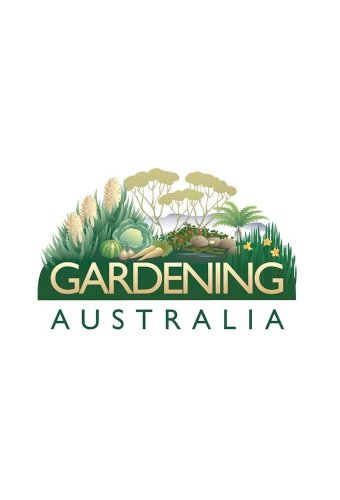Gardening Australia - Season 2010 - Episode 45 - Stephen's Perennial Border - Ask It/Solve It - The Vegie Patch - Understanding Plant Uses - Leonie's Pest Remedies - Habitat Gardeners
https://123movies.ink/thumbs2/show_fanarts/fanart_show_fcaa09544478592564eb3545e3beb43e.jpg

share this episode link to your friends. share to support our website.
SUMMER SERIES
TRANSCRIPT EPISODE 45
STEPHEN RYAN: Hi. Welcome to Gardening Australia’s Summer Series where we have some of the stories from 2010 that were the most popular with you at home.
This week, Jerry explores a garden that provides habitat for wildlife, just kilometres from Brisbane’s CBD.
And Tino takes a look at some different types of garlic.
TINO CARNEVALE: The variety I’ll be planting today is the ‘Purple Stripe’ because I find the hard neck types do a lot better in a cooler climate.
STEPHEN RYAN: Perennial borders look great at this time of the year, but back in winter, this one required quite a bit of maintenance.
STEPHEN'S PERENNIAL BORDER
Stephen Ryan
STEPHEN RYAN: Traditionally, the perennial border was somewhere that you came in and cut everything to the ground for the winter, certainly in Europe where they get heavy snows, this is probably a practical way of detailing with it. But in our milder climates, it’s nice to leave some structural plants standing and to come in gradually throughout the year and remove things as they collapse. So I’m going to start with my Arctotis.
Arctotis is a fantastic South African ground cover daisies. They come in a range of colours from yellow to burgundy and red. Mine’s a wonderful ‘magentary’ colour and it will flower all summer. They cope well with sun, they’re very drought tolerant, but they are quite vigorous and if I don’t take complete control, this plant will take over my whole perennial border in only a year or two.
This stake has a very important job in my garden. I put these in wherever I’ve put some special or precious bulb so that when I’m doing jobs like this, I won’t stand on them or stick my fork or spade straight through them.
Most of this stuff will go off to the compost heap, but there’s a great opportunity here to create some new plants. The Arctotis has rooted as the stems have gone along the ground. So all I need to do is break some of the foliage off and then I can plant that straight back into the garden or give it to some of my friends.
Now I’m just going to cut out the Ginger Lilies. All of the stems that have flowered come out. But if you have a look here, you’ll notice that I’ve actually got some that haven’t flowered. Now if the frost doesn’t take those, they’ll stand there looking fantastic all winter and they’ll be my first flowers for next year.
Well that’s the end of the Gingers. While I’m in this part of the border, I want to show you another fascinating relative of the Ginger. It’s a Canna Lily and this particularly variety is known as a ‘Chimera’ and a Chimera in mythology was an animal made up of lots of different animals, so a plant Chimera is one that’s two different plants that have melded together. And in the case of this one, we have a green leaf Canna that has yellow and orange spots in the flower and we have a brown leaf Canna that has red flowers and the two different characteristics erupt in weird patterns all over the plant, so it really is quite a strange and bizarre plant to have in the garden.
I might as well pull out these ornamental tobaccos because they’ve run their race for this year. When it comes to the evergreen grasses, all I do is I run my hands through them and that pulls out all of the dead thatch, then the plant will look fine for the rest of the winter and it’s quite therapeutic really.
The Alstroemeria’s a fantastic plant and it flowers for months and months, so by pulling out the spent flower stems, I keep the show going and it will last all through the season.
This summer-flowering Red Hot Poker or Kniphofia also needs a real cleanup. Now I find that if I pull instead of cut the leaves, it will make a much, much tidier job at the end of the whole exercise. I may well have to cut the flower spikes, but what I’m trying to do is get rid of all of this long, daggy foliage that’s hanging over the top of everything else and it will start off with some lovely fresh new stuff once the spring hits.
Well, that’s about right. Not every plant in my perennial border is an authentic herbaceous perennial. We have one here which is a plant called Rhus pulvinata Autumn Lace group. It suckers all through the bed, has fantastic autumn foliage so I wouldn’t live without it, but if I let it go, it would grow into a huge big shrub or even small tree, so by pruning it down every year, I have it at a constant height every summer and because it’s got a big root system under it, its foliage next season when it comes up will be even bigger and bolder.
ASK IT/SOLVE IT
DEANNE, BOMADERRY NSW: Now Tino, I’ve got Beetroot leaves with measles. They’re a little bit misshapen and the leaves look like they’ve got measles.
TINO CARNEVALE: Well you’ve got a fungal spot here. This is typical of fungal spot. What will happen is the spores will float onto the leaf and then they’ll radiate out from there. Now, it’s quite juvenile, so the way of controlling this, if you wanted to keep your crop in, is to actually remove the leaves. A lot of the time with vegetable crops, they’re a quick rotation so you can actually remove the whole crop. What I would do then is leave the ground fallow for a couple of weeks. Let the sun get down into it and that’ll solarise the fungus and then maybe don’t plant with the similar family for the next rotation. Anything like Silverbeet and that’s out but root vegetables like carrots and stuff, might be a good option for you.
DEANNE, BOMADERRY NSW: Great. Ok. Thank you very much Tino.
TINO CARNEVALE: Not a problem. Good luck.
STEPHEN RYAN: Garlic is an essential ingredient in most Australian kitchens, so it’s no surprise that many of you wanted to see Tino’s garlic story again.
THE VEGIE PATCH
Tino Carnevale
TINO CARNEVALE: Garlic’s part of the Alliaceae family, related to the onion or the lily. Now garlic keeps really well and a good crop should keep you in garlic all year round. This is part of my crop from last season. Now there’s two major types. There’s the hard-neck variety of which this Purple-striped is and as the name suggests, the neck is quite stiff. There’s also the common garlic that you find in your supermarkets – this white – and this is a soft-neck variety. And as the name suggests again, it’s got a softer neck. There’s another type of soft-neck and that’s called Elephant Garlic and that’s one clove. Now it grows really large, but I find it has very little flavour.
The variety I’ll be planting today is the Purple Stripe because I find the hard-neck types do a lot better in a cooler climate. But first, I’ve got to get this bed sorted.
Now I’m liming this bed, because garlic likes a sweeter soil. It also likes a lot of manure. Now I dug the manure in about a month ago. Now the reason I did this was because if you put lime down with manure, they actually work against each other. The lime prevents the nutrients in the manure from being available to plants, so dig the manure in a month before. Nutrients released – happy garlic. It also likes a rich fluffy soil and that means plenty of compost.
Dig it in well to about a fork’s depth. If you have grown your own garlic before, simply grab your harvest and divide up these bulbs into individual cloves. Now make sure you get a lot of this base plate at the bottom. That’s it just there and don’t peel the skin off. But if you’re growing garlic for the first time, you can pick up little bins like this at your local nursery and these are just individual cloves and this is what I’ll be planting today.
Plant your cloves with the base plate down and with the pointy end just below the surface of the soil. Plant the cloves about 15 centimetres apart with about 30 centimetres between the rows. Now these don’t need to be watered in just yet, but don’t let your garlic dry out through the growing season or it can reduce your harvest. Over winter, give them two applications of a complete fertiliser and then in the first warm days of spring, give them a nitrogen based fertiliser just to really swell those bulbs. Well, done.
In a six bed rotation system that we use here at The Patch, this bed has been rested for about a month now and it’s time to enrich the soil with a green manure crop. Now this is a bought manure crop. It’s got some lupins, some rye and some oats, but I like to use this opportunity to maybe get rid of some of my old seed packets. They’re a bit out of date. I’ve just got some old broad beans, some types of peas and some borlotti beans in there. But I don’t quite have enough to broadcast over the whole bed, so I’ve got to mix some of this through. That should do it. Before I plant the green manure crop, I like to incorporate some organic matter. I’m using some compost and some pulverised cow manure. And broadcast the seed over the bed and do it quite thickly and then give it a nice, light rake in and in about a month’s time, you should be able to come back and dig this through, really putting some zing back into this soil.
Now I’m just lifting these Jerusalem Artichokes. Now this is the wonderful tuber that you actually eat. A lot of people wait for these stems to die down before they harvest, but I reckon you can harvest from mid autumn onwards. The tubers are sometimes stuck to the base of the plant, but mostly you have to fish around in the bottom of the hole.
Now in warmer climates, you can plant these in late autumn, early winter and traditionally in cooler climates, it’s done in the onset of spring, but I’ve found that it’s easier after you’ve harvested just to dig your hole and throw one back in and then you don’t have to come back and do the job in spring.
To plant your Jerusalem Artichokes you’ll, need a rich, viable, well drained soil like this one. If your soil isn’t like this, you’ll need to add a lot of organic matter. Simply to plant, select a nice small tuber, dig a hole about 20 centimetres deep and throw it in. Now if you’re planting for the first time, you can pick these up from your local nursery, but the ones that you buy at your greengrocers are just as good. Simply backfill and make sure the tubers are about 30 centimetres apart.
Jerusalem Artichokes are easy care. They like a bit of fertiliser, but in good soil, they don’t even need that. And once you’ve got them in your garden, you’ll find them popping up everywhere. Well happy gardening and I’ll see you next time.
STEPHEN RYAN: Now here’s Clarence with some surprising traditional uses for some of our native plants.
UNDERSTANDING PLANT USES
Clarence Slockee
CLARENCE SLOCKEE: Jingawal, we’re here in the Royal Botanic Gardens Sydney, the traditional home of the Cadigal – so we pay our respects and acknowledge the Darug and Ora nations. Now looking around us we can see these beautiful roses, they look good and some of them even smell good. For aboriginal people when we look at plants we see a whole lot more.
There’s no better example of this than with our wattles, with over 1000 different species is it any wonder that aboriginal people have found so many uses for them.
Of course one of the main uses for wattles are the seeds themselves. Now the wattle seed has been used for thousands of years traditionally to make damper, and these pods are split –perfect time to get the seed out now. Of course these days you can get wattle seed ice cream, wattle seed cheesecake and there are cafes that’ll even give you a wattle-chino – it’s not quite my cup of tea but I do like wattle seed.
Now we’ve just finished cooking a wattle seed damper on the fire, might have dirty hands so we take some of the foliage from the wattles, bring it down to the water, eventually if you rub hard enough it’ll lather up like a soap. And that’s why we call it the Soap Plant. The chemical that lathers up we can also use that to deoxygenate the water and if it were low tide we’d probably have lots of rock pools here with some nice fish in them. So enough of the foliage get it into the water the fish go a bit lethargic – nice and easy to catch. It’s that simple.
So many different species of wattle - there are lots of different timber. Now what does this shape here remind you of? This is an elbow joint, those elbow joints they’re perfect for the returning boomerang. This is a blank the finished product looks a little bit better and they do return. Down the bottom we’ve got L joints and they’re great for non returning boomerangs – the nulla-nullas. All through this tree different types of timber can be used for things like waddies, digging sticks even clap sticks. And again over a thousand different species so you’ve got different colours, textures, hard and soft woods.
Another multi-use plant is this beautiful old Melaleuca. Now they call them tea trees or paperbark. Of course the oil from the tea trees – great antiseptic. The paperbark that has heaps and heaps of uses.
Of course the more common uses for paperbark is that of shelter and here on our humpy we’re just using it like roof tiles. We just put it on top like this, lock them into place - they stop the rain, it’s that simple. If you come inside we’ll see what else we can use it for.
So down here we’re using paperbark as bedding, really soft it’ll keep you dry, I’m telling you this is great stuff to sleep on it’s really good. Also if you’ve got a little baby, the women would use the Coolamons, which is an aboriginal word for bowl, paperbark in, baby on top nice and soft for bubba. The softer pieces of paperbark – we can soak these in water wrap our food inside, preferably fish for me, but you can use kangaroo or emu, put it on the fire really easy to cook. Of course there are medicinal uses for paperbark as well.
So one of the more important uses of Melaleuca or tea tree or paperbark is of course the oil. The oil is found in the leaves. We use that in the cut as an antiseptic, we can use the paperbark as the bandage and whatever’s available in this case we’re using Lomandra – we use that as our tie and hopefully that’s going to stop the bleeding and perhaps infection as well.
So there you go next time you look at plants hopefully you’ll see a whole lot more than just the beauty of them. My names Clarence until next time Jingawal.
STEPHEN RYAN: One of the few problems of living in a tropical paradise is dealing with those tropical garden pests, but never fear, here’s Leonie with some natural homemade remedies.
LEONIE'S PEST REMEDIES
Leonie Norrington
LEONIE NORRINGTON: Darwin’s a paradise for insects at this time of year. During the wet season from October to May, the weather’s warm, there’s high humidity and lots of rain, so we have an explosion of leafy growth and that means food for insect pests and they breed very quickly.
This includes everything from sap sucking insects like aphids, scale, mites and thrips to chewing insects like leaf-eating ladybirds, caterpillars and grass hoppers.
I like remedies from ingredients that grow in my garden. Now these are contact sprays so they need to be sprayed directly on the body of the insect pest. They will keep a couple of days, but they’re best made fresh every time.
For soft-bodied insects like aphids and mites, try this pawpaw spray. It’s one of my favourites. I’ve blended a bunch of pawpaw leaves with enough water to make a paste and then added a litre of boiling water and let it sit for a few hours. Now I just need to strain it and add two litres of water. Add a little bit of potassium soap – about 10 mill per litre. Now we want 2 mill per litre of vegetable oil. And now we just need to stir it and give it a nice fine strain. Apply it generously all over the plant every couple of days or until you see a result. Remember to re-apply after rain or if you've used a sprinkler.
This next remedy will work with all the insects in your garden, except grasshoppers and beetles. They're hard-bodied and the only way to deal with them is give them a good squash. So we start off with a cup full of Birdseye Chillies and add enough water to make a paste. Birdseye Chillies are extremely hot, so don't breathe the fumes, don't touch your face or your eyes or sensitive parts of your body and wash your hands thoroughly afterwards. Now I just need to add some potassium soap, a litre of water, let it sit overnight and it’s ready to go. Spray on top and under the leaves. With all these remedies, I also spray the neighbouring plants so the pests don’t just move and come back later.
If you’ve got aphids, white oil is what you need. It’s also good for other stationary insects too because it covers and suffocates them. To make it, take one cup of oil, one and a half cups of water and a couple of mill of potassium soap. Either shake it or mix it up in your blender. To use it, you use one part of white oil to 10 parts of water. Only apply white oil, and in fact all of these remedies that I’m showing you, in the evening when it’s cooler. You risk burning a plants if you spray them in full sun.
Potassium soap is especially good for thrips and mites. It’s better than other soap sprays because it’s gentler on the plants. All you do is add 20 mL of Potassium Soap to a litre of water. Apply it liberally to the plant, focussing on where the pests are located. Keep doing it every 2 days until you see a change.
With all of these remedies take care. Do a test patch first, wait 24 hours to see if it does any damage to the foliage and then go further. And don’t be tempted to make them too strong. Store them in sealed containers, never use drink bottles, label them clearly and keep them out of reach of children and pets. If you have any sensitivities, make sure you use safety gear.
Pest remedies, even the natural ones, should be the last resort in your garden. So keep an eye on what’s happening. The sooner you treat a problem, the better and the happier and healthier your garden will be.
STEPHEN RYAN: And now to Brisbane where Jerry met a couple of gardeners who’ve proved that being close to the city doesn’t mean being far away from nature.
HABITAT GARDENERS
Jerry Coleby-Williams
JERRY COLEBY-WILLIAMS: Because of changing priorities and interests, Richard and Joan Cassels have changed homes several times over the last 20 years, but all 4 homes have backed onto this gully in inner-suburban Brisbane.
So what did you decide you wanted from this latest garden?
JOAN CASSELS: Basically a place that was fabulous and beautiful to be in. A place that would help to feed us, but also to...a habitat for the wildlife which is so rapidly disappearing and I was feeling. ‘Oh my goodness. If we don’t something for what we know was the wonderful bird life that was here, we’re going to lose it all.’
JERRY COLEBY-WILLIAMS: There’s a lot of different things in the garden but basically what I can see is natives and food plants.
JOAN CASSELS: Well I wanted as many food plants as I could close to the kitchen and they mainly take the most maintenance too for feeding and for watering. We’ve got the lemon and the mandarin, the olives, the tamarillo, the pawpaw and an avocado. We have a rhubarb and asparagus.
JERRY COLEBY-WILLIAMS: A 40 degree plus slope like this is a huge challenge. The terracing has effectively halted erosion and retains water on site where it is needed. And I love the way it has been done with flair, rather than just conventional parallel levels.
These ground covers are looking really healthy. What are you growing here?
JOAN CASSELS: Dianellas and Lomandras on this very steep bank and they seem to love sitting in tyres because they get well watered. They didn’t start as tube stock. They started as the next size up and I put rocks around them so then the turkey can’t just pull it out. And the noisy miners come and feast as well.
JERRY COLEBY-WILLIAMS: The sound of birds is everywhere here.
RICHARD CASSELS: Well we’ve got 2 birdnest boxes and one of them is now currently occupied by a pair of kookaburras and there’s a young kookaburra hammering on the sides all the time. And over the last 10 years I’ve recorded birds and we’ve currently recorded 96 different species in the gully, so it is really important habitat even in the city centre.
JERRY COLEBY-WILLIAMS: And how about down here? There’s some lovely contrasting foliage I must say.
JOAN CASSELS: It is isn’t it? That’s the Diploglottis australis and behind is the Grevillea baileyana and I love that when the wind blows because it has this wonderful blonde, satin underside of its leaf.
JERRY COLEBY-WILLIAMS: Now this I recognise. This is native holly and it’s a favourite of mine, but what purpose does it serve?
JOAN CASSELS: I’m hedging it to make a little hedge row across here because small birds love hedge rows so little wrens and things like that, they feel safe if they can tuck themselves into a little hedge. So this is a little hedge row going round about the pond.
JERRY COLEBY-WILLIAMS: The Cassels have done a wonderful job improving their backyard, but what’s over the back fence is equally important to them. Together with a group of concerned neighbours, they successfully campaigned to have the gully revegetated with natives.
RICHARD CASSELS: Cause quite a few of the neighbours are now actually involved in keeping the creepers, the other weeds out of here and the canopy’s growing really nicely, so we’re going to end up with even more wonderful habitat. An extension of our habitat.
JERRY COLEBY-WILLIAMS: Well I think it’s marvellous that you can have all this and be just one and a half kilometres from Brisbane CBD.
JOAN CASSELS: It is isn’t it? It just proves that you don’t have to be living on 5 acres somewhere with a strawbale house to have all of this.
RICHARD CASSELS: It’s so full of wildlife and it’s such an interesting challenge to live in. And also the gullies...they’re so full of trees, you could be miles away. It’s just a lovely spot to live.
STEPHEN RYAN: That’s all we’ve got for you this week, but don’t forget our Vegie Guide is still online, so why not go there for tips and advice on what to plant in January in your climatic zone. And in the meantime, here’s a taste of what’s on next week’s show.
Jane visits an inspiring garden, where the pets and plants co-exist in harmony.
And Colin travels to Townsville where he meets a couple of tenacious gardeners who have created an oasis in the horticulturally challenging dry tropics.
That’s all for this week, so happy gardening and we’ll see you again next week.
Genre:
Documentary,
home-and-garden
Actor:
Costa Georgiadis,
Tino Carnevale,
Jerry Coleby-Williams,
Jane Edmanson,
Stephen Ryan,
Peter Cundall,
Joshua Byrne
Creators:
Country:
AU,
Au
Languages:
en,
Episode: 45
Runtime:
60
Date Modified: 2011-01-08 00:00:00
Air Date: 0000-00-00
Year Released: 2005
Rating:
6.7 out of
10
31
Content Rating:
TV-G
Views: 31
Quality: HD
Networks:
Organic Gardening,
lifestyle,
gardening,
https://www.youtube.com/embed/
Trailer: Gardening Australia - Stephen's Perennial Border - Ask It/Solve It - The Vegie Patch - Understanding Plant Uses - Leonie's Pest Remedies - Habitat Gardeners
TV Series : Gardening Australia - Stephen's Perennial Border - Ask It/Solve It - The Vegie Patch - Understanding Plant Uses - Leonie's Pest Remedies - Habitat Gardeners - Official Trailer
https://123movies.ink/thumbs2/show_fanarts/fanart_show_fcaa09544478592564eb3545e3beb43e.jpg
2011-01-08 00:00:00














